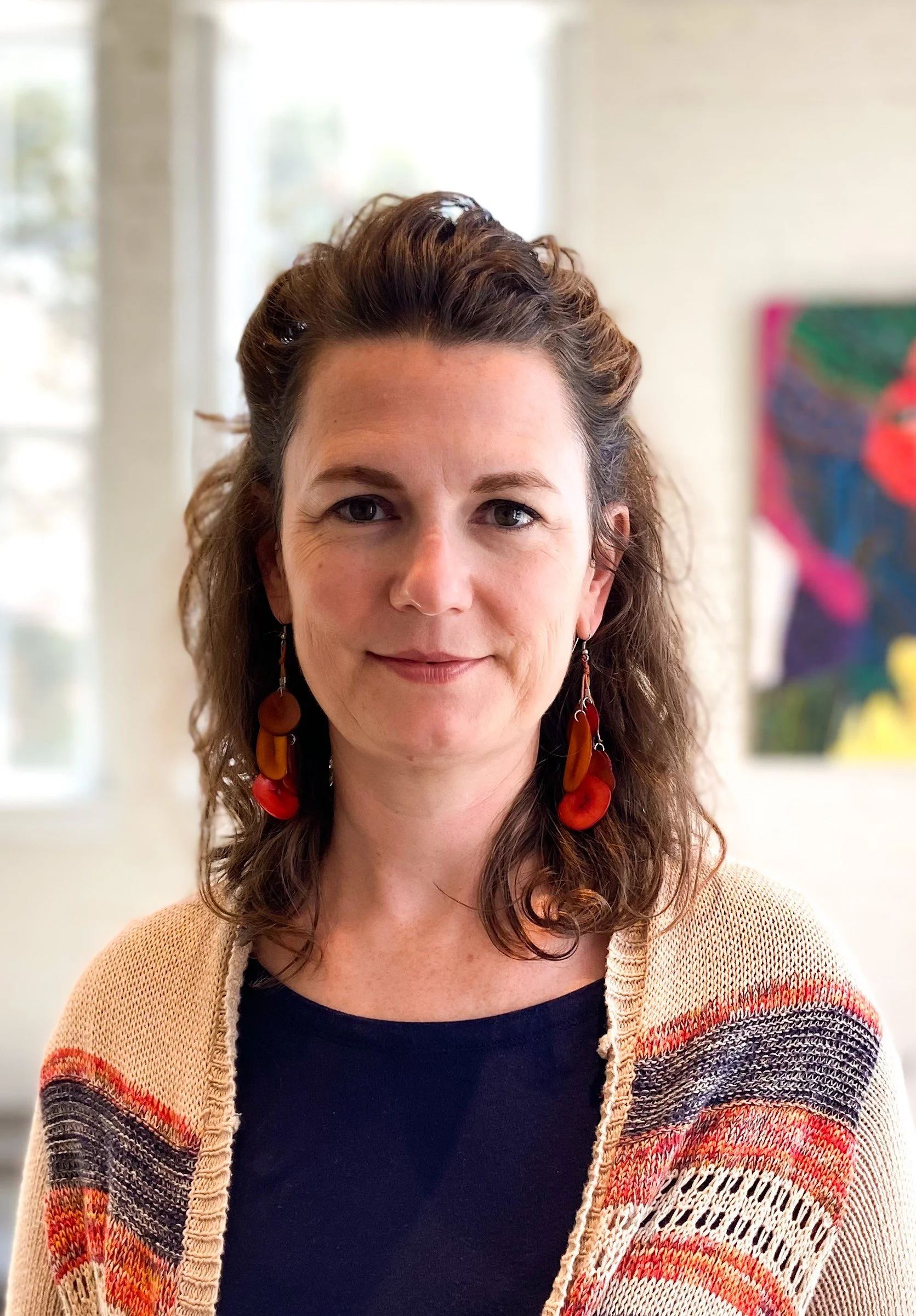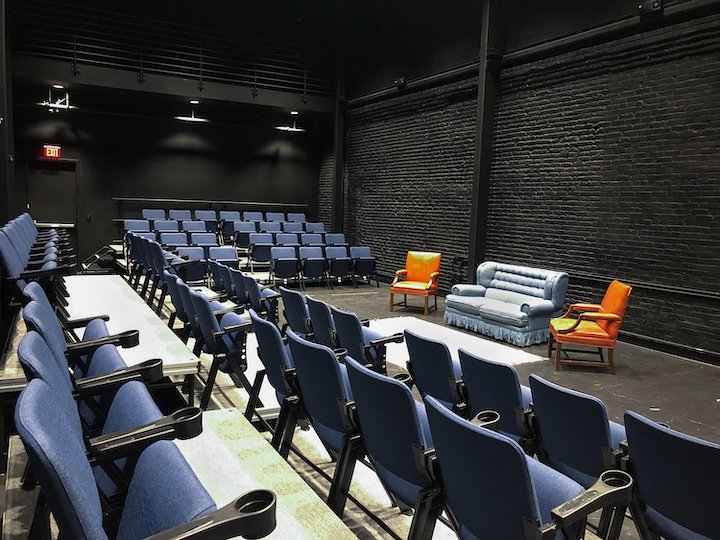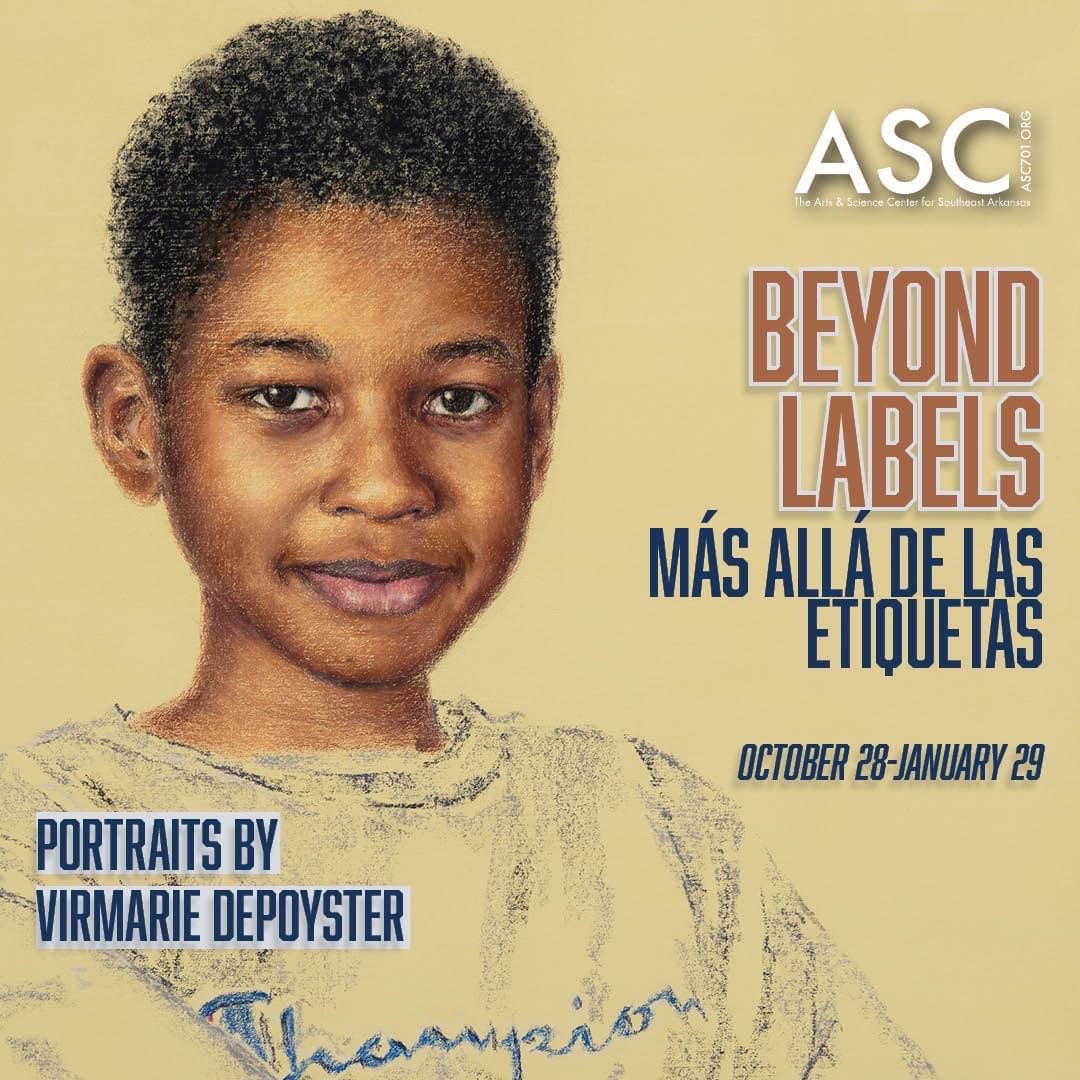Interview with Arts & Science Center for Southeast Arkansas Director Rachel Miller
For the past 17 years, Dr. Rachel Miller (PhD in Heritage Studies from Arkansas State University in 2014) has created and managed educational outreach programs for state, city, and non-profit arts and cultural organizations. She also teaches writing and literature for university and non-traditional students. In 2017 she became the Executive Director for the Arts & Science Center for Southeast Arkansas located in Pine Bluff.
AAS: Rachel, talk about your educational background and how you became Executive Director for the Arts & Science Center for Southeast Arkansas.
RM: If you asked me at age nine what I wanted to be when I grew up, my response would have been an art teacher and a belly dancer. Although at one point in my life, I have participated in both activities, where I am now in my career is pretty far off from where I thought I would be at age nine. Growing up as an “Air Force brat” and living in Germany as a kid and teenager, my interests oscillated between being a helicopter pilot, travel writer and cheese maker (loved visiting the cheese farms in Germany and Holland). Those early interests later led me to jobs based in cultural heritage at the Arkansas Historic Preservation Program, ASU Heritage Sites (in the Arkansas Delta), MacArthur Museum of Military History and Wildwood Park for the Arts.
“I’ll have to admit that my work calling never was to be a director of a museum. I see myself more as a connector instead of a director.”
I joined the Arts & Science Center team as the Executive Director in April 2017. I’ll have to admit that my work calling never was to be a director of a museum. I see myself more as a connector instead of a director. Even so, I wouldn’t change a thing. My work trajectory has always included community engagement whether it’s been through creating programs for cultural sites or teaching literature and writing in a college classroom or community workshop. I have managed to take 20 years of experience in two different career tracks – writing/research and community programming – and combine it into one job, being the director of a wonderful museum. I love “being on the ground” and working individually with community groups, especially when it involves creating awareness and enthusiasm for a community’s cultural assets. I spent seven years at the Arkansas Historic Preservation Program (AHPP), an agency of the Department of Arkansas Heritage, working one on one with community groups and educators on providing well-researched, hands-on engagement programs emphasizing their community’s historic sites and cultural assets. Those relationships and connections inspired me to continue working in the field of cultural heritage. Furthermore, those connections continue to benefit me now as the Arts & Science Center seeks out new partnerships in the region and outside of the area.
The Arts & Science Center for Southeast Arkansas (photo by Timothy Hursley)
AAS: What is the Arts & Science Center for Southeast Arkansas? What is its mission?
RM: The Arts & Science Center for Southeast Arkansas (ASC) serves as a cultural crossroad for the community and region; engaging, educating, and entertaining through the arts and sciences. An American Alliance of Museums accredited museum, the Arts & Science Center has been around since 1968, formed after a couple community arts organizations – Little Firehouse Community Arts Center (provided hands-on arts workshops), Little Theater, and Civic Center Arts Museum – consolidated creating one entity.
The museum became a City Commission in 1971. For the next 20 years or so, ASC served the community from its location in the “basement” of the circa 1967 Pine Bluff Civic Center, designed by Edward Durell Stone – one of the best examples of mid-century architecture in Arkansas.
In 1994, ASC opened its new 22,000- square-foot facility at 701 S. Main Street with four galleries, a 232-seat theater, and classroom studio. We provide year-round programming in the visual arts, performing arts, and the sciences through exhibits, performances, classes, and community partnerships. Our educational programming focuses on the intersection of STEM and Art to create STEAM – arts & technology education. Gallery admission, hands-on family programming, school field trips, and after-school programming is free.
At ASC, we aim to create “experiences” for our visitors and program participants that foster prolonged engagement. Each program is geared to have some essential object – whether it is physical food, Makey Makey device or a piece of artwork – at its programmatic “core” that engages/ignites all the senses. We strongly believe that immersive sensory experiences have more of a lasting impact on an individual.
AAS: So, is ASC funded solely by the city of Pine Bluff?
Aerial view of the ASC for Southeast Arkansas, Pine Bluff, Arkansas (photo by Timothy Hursley)
RM: The Arts & Science Center receives year-around funding support from the City of Pine Bluff and the Pine Bluff Advertising & Promotion Commission. Additional year around support comes from the ASC Endowment Fund, the Arkansas Arts Council and the National Endowment for the Arts, the Arkansas Humanities Council and the National Endowment for the Humanities, the Ben J. Altheimer Foundation, the Kline Family Foundation, and the Windgate Foundation. We also receive sponsorships from local and regional businesses. The Arts & Science Center is fortunate to have dedicated and supportive donors and members. And I write a whole lot of grants throughout the year.
AAS: How large is the ASC Permanent Collection and what is its collecting scope?
RM: The Arts & Science Center currently has over 1400 pieces of artwork. Our collecting scope focuses on Arkansas artists, art of the Delta and African American artists. Dr. Jeff Donaldson, one of the founding members of AfriCOBRA (acronym for African Commune for Bad Relevant Artists, est 1968), was from Pine Bluff. The ASC Permanent Collection includes several artworks from members of AfriCOBRA, such as Barbara Jones-Hogu, Kevin Cole, and Nelson Stevens, as well as other prominent Black artists Elizabeth Catlett, Palmer Hayden, Benny Andrews, and Arkansas artists Henri Linton, Terrence Corbin and Earnest Davidson.
AAS: There is a new community arts and events space associated with ASC. What does it offer the community?
RM: The ARTSpace on Main, with a little more than 11,000 square feet, is a multipurpose community arts and events space located right next to the museum. It was built in circa 1920 as a firehouse. The building features the Windgate Community Gallery for area artists to show and sell work; the Kline Family Foundation Event Gallery for meetings, art exhibitions, and events; a second-floor loft gallery and event space; flexible workshop spaces for classes and artist demos; a wood shop and scene shop; a costume shop; a pottery studio; and the outside ART Yard for large-scale projects and events.
Robinson Black Box Theater, ART WORKS on Main.
Its sister facility, ART WORKS on Main, located at 627 S. Main Street (both buildings are connected, and it’s comparable in size to The ARTSpace) was purchased in late 2019, and renovation completed in late May 2021. On the bottom floor there is a 65-seat black box theater and modern concession/lobby which will allow the Arts & Science Center to provide small-scale events year around, such as small-cast theater productions, live music, improv, poetry readings, and digital music/graphic design installations.
ART WORKS also features five live/work artist residency apartments and accompanying studios. ASC plans to launch an artists-in-residence program in early 2022 with focus on the intersection of art and technology, and community engagement. More details to come.
Our ARTx3 (ASC, The ARTSpace and ART WORKS on Main) community engagement initiative aims to empower our youth through the arts, support the revitalization of Downtown Pine Bluff, bolster the creative economy, and bring positive attention to our city.
I have to brag a little. The ARTSpace project recently received a Merit Award during the 2021 AIA (American Institute of Architects) Arkansas Design Awards, the 2021 Award for Outstanding Achievement in Adaptive Reuse from Preserve Arkansas, and Bronze Award for Adaptive Reuse from the South Central chapter of the American Society of Interior Design.
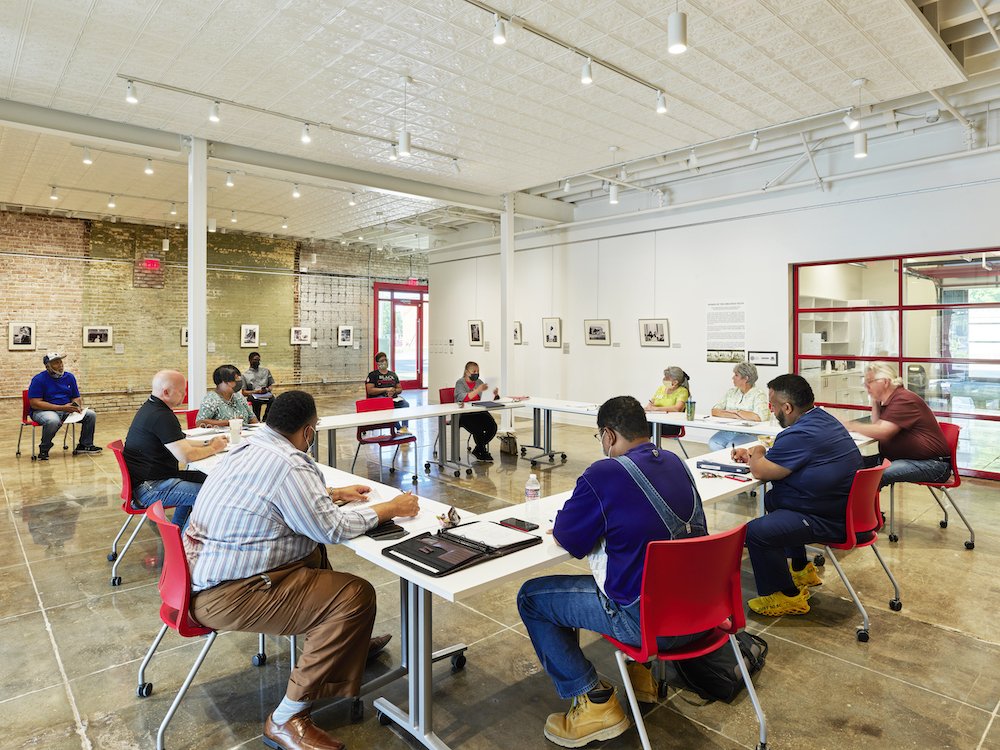
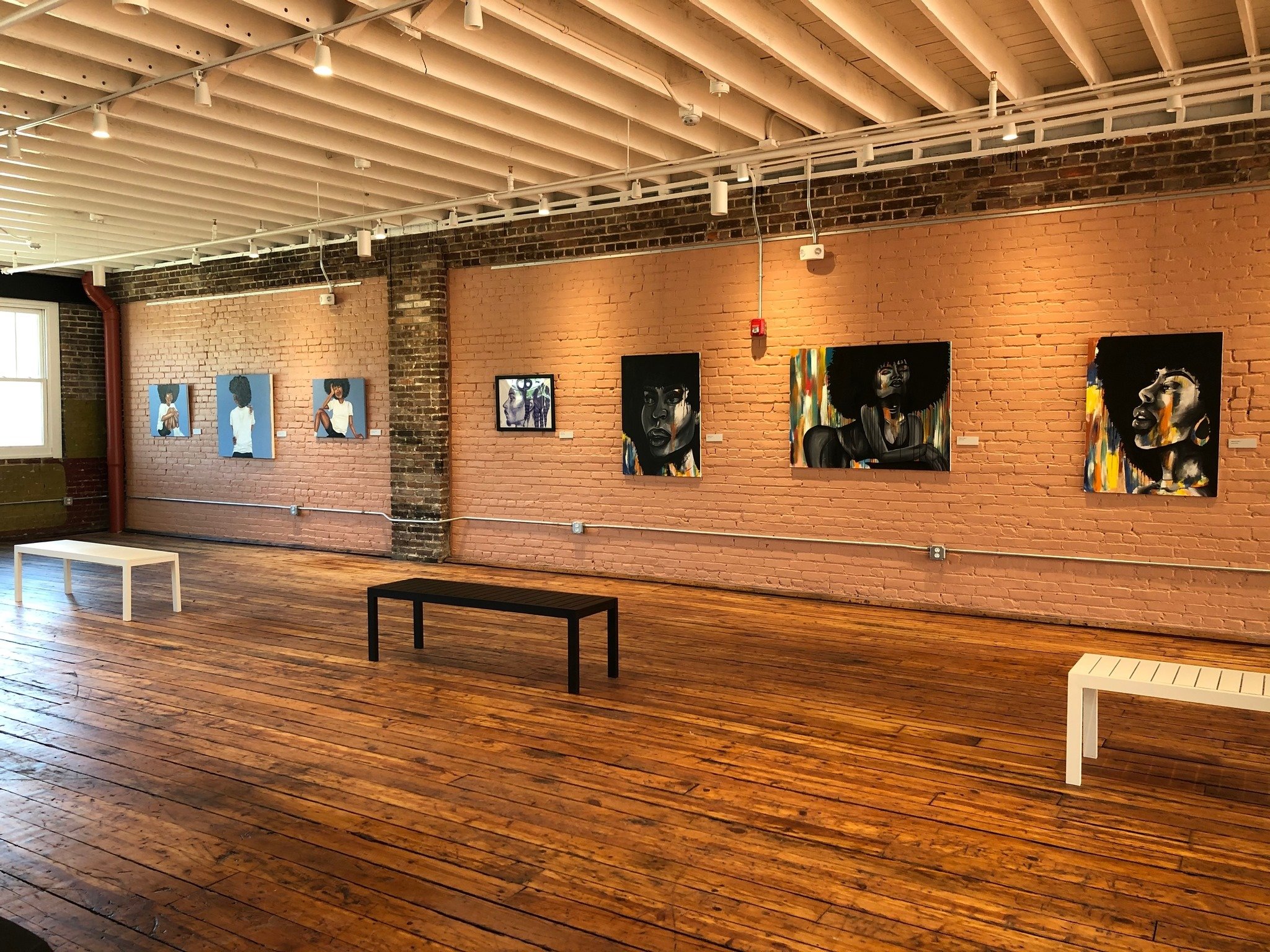
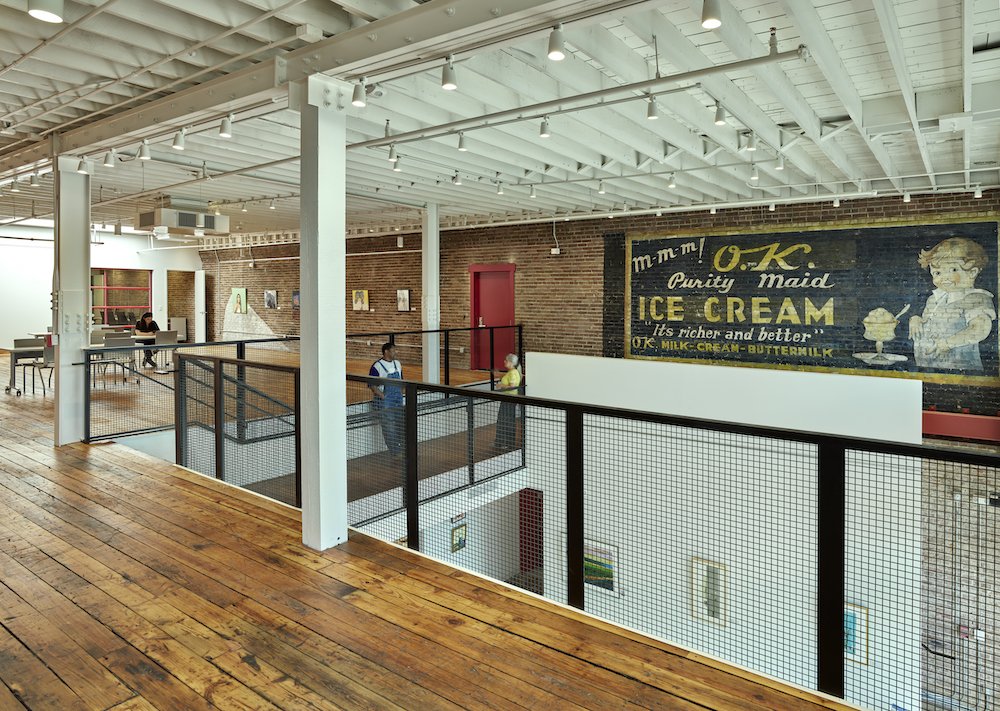

AAS: How many exhibits can run simultaneously?
RM: In the museum, we have three exhibits at a time. Our largest gallery, Kennedy Gallery, features exhibitions by individual artists, as well as the Irene Rosenzweig Biennial Juried Exhibition. The 2021 Rosenzweig features 37 artists from seven contiguous states. The International Paper (IP) Gallery is typically reserved for traveling exhibitions, artwork by up and coming artists who have a smaller body of work, and community art exhibitions. The IP Gallery is our community interactive space with a hands-on art-making station, a STEAM corner with a stop motion and “baby” coding stations, and where we host receptions or special artist talks. The Altheimer Gallery is for exhibitions based in the ASC Permanent Collection.
A couple of years back, the Simmons Gallery was converted into a children’s interactive space with Big Blue Blocks to teach basic architecture and engineering concepts, a reading corner (we collaborate with the Pine Bluff Library and literacy organizations to host reading time/activities), and hands-on arts activity stations. Our new facility, The ARTSpace on Main, features a retail gallery, the Windgate Community Gallery, and the Loft Gallery, another community art gallery space.
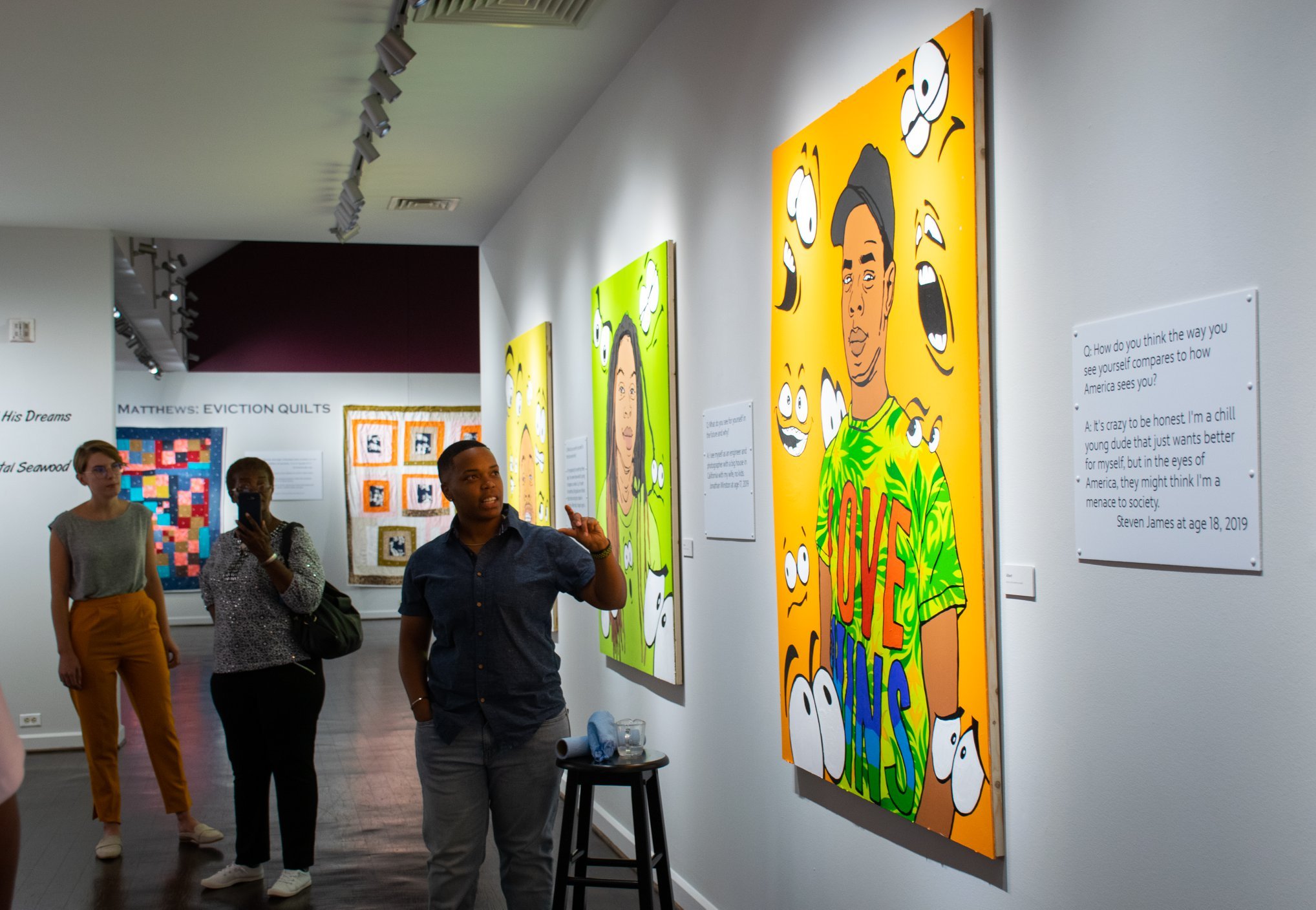
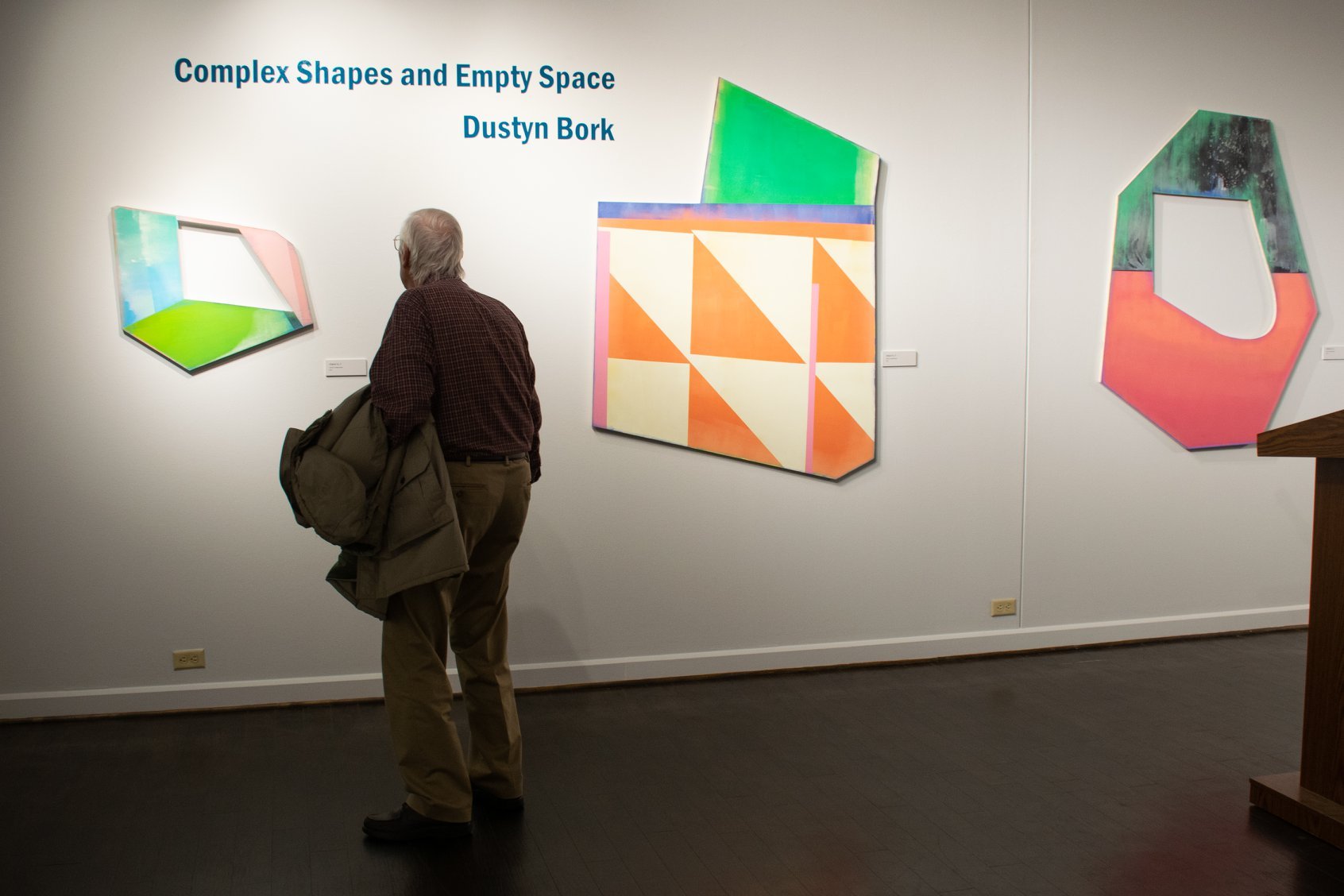
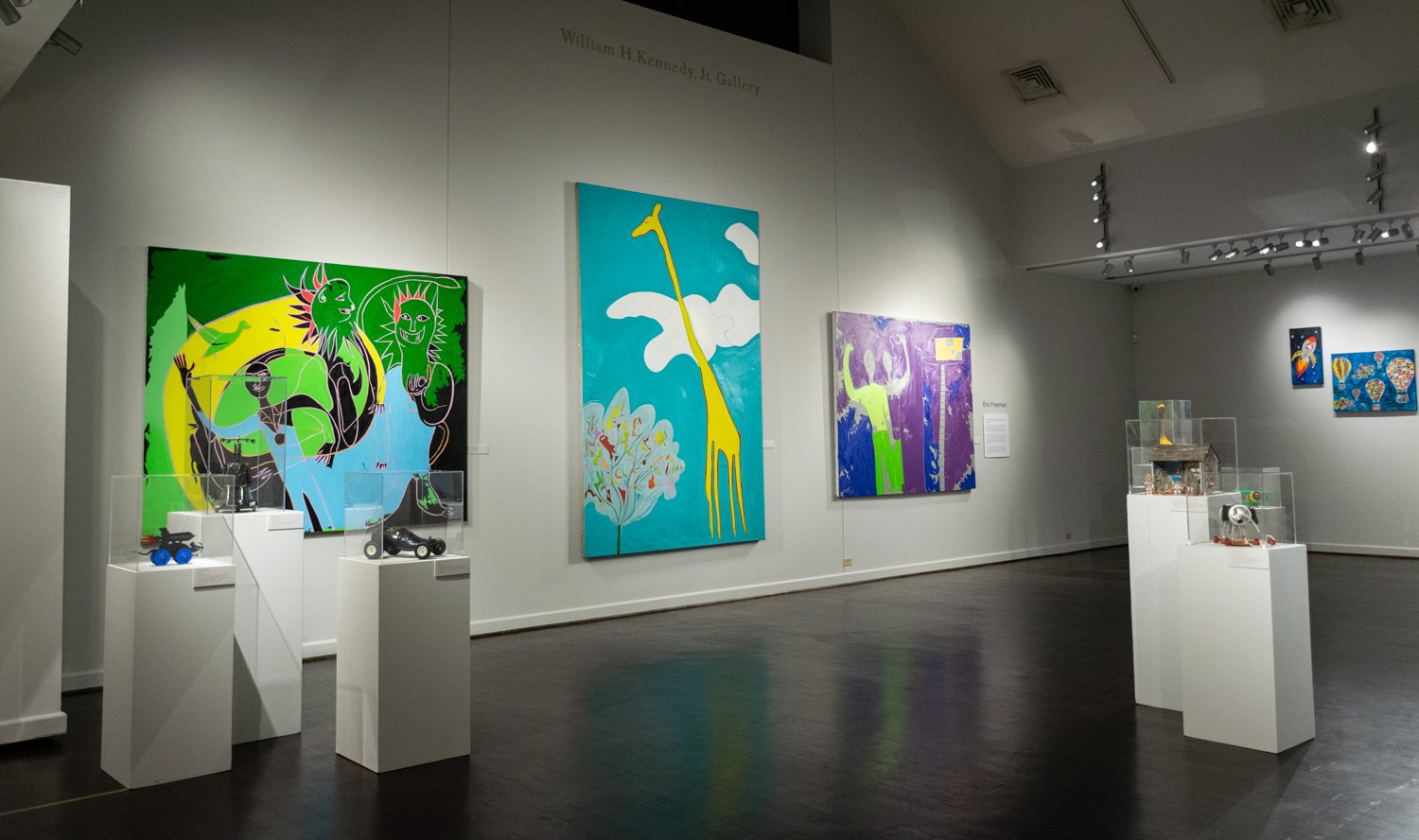
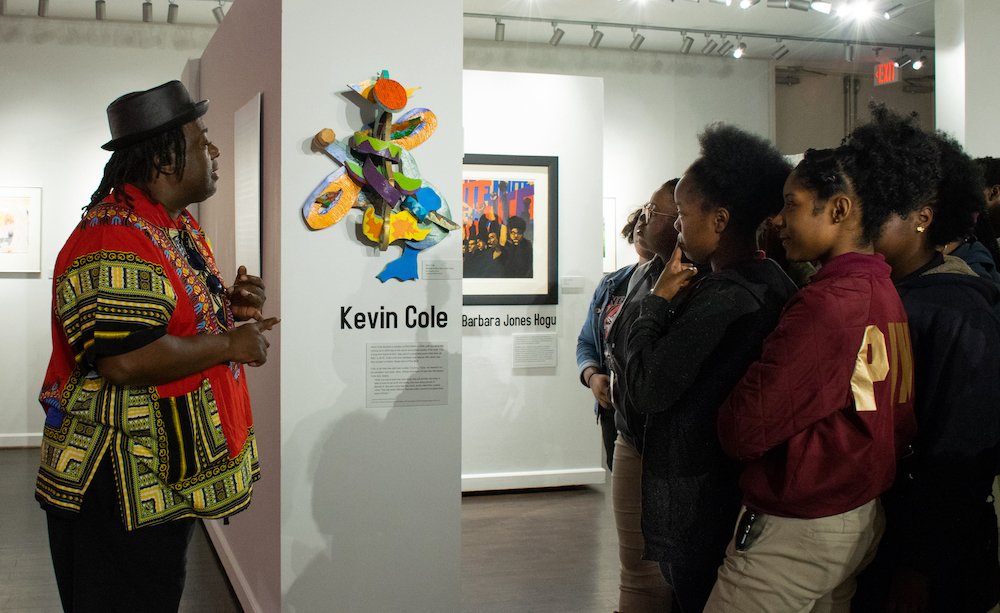
AAS: There is a current show by Virmarie DePoyster, who I interviewed last year, exhibiting her wonderful portraits, and the Irene Rosenzweig Biennial Juried Exhibition just closed. A number of artists have mentioned the importance of the Rosenzweig Juried Exhibition. The ASC is really exposing the region to high quality talent.
RM: We are excited to exhibit DePoyster’s Beyond Labels collection. She beautifully portrays the personalities of the individuals featured in her exhibit through color and language – although its simple one or two phrases – she manages to capture a whole world of experiences. The Rosenzweig exhibition has been going on for close to thirty years. It’s so awesome to see young artists who exhibited in the Rosenzweig exhibition -many times, it’s their first museum exhibit - to grow as artists and receive state and national recognition of their artwork.
Our new curator, Jessica Lenehan, brings some great experiences and knowledge to ASC’s exhibition program from her time as the Assistant Curator at the Historic Arkansas Museum and as the Museum and Education Assistant at the Bill Clinton Presidential Library. When I found out that she was the one who designed the graphics and logo for the Clinton Library’s Like It’s 1999 exhibit, I was like “wow!” I loved that exhibition! She has a great eye for detail and layout – a really wonderful aesthetic.
AAS: I would like to ask Jessica about the process for choosing or deciding on an exhibition.
Jessica Lenehan, ASC Curator
JL: I have a very, very long list of artists I’d like to work with, which I’ve collected through various means and is constantly growing. First and foremost, I use the Arkansas Arts Council’s Arkansas Artist Registry. I’ve found the Artist Registry to be a great resource for gaining access to artists across the state instead of just within my region, and I would encourage any artists working in the state to apply. It’s a free and effective way to promote your work! There are specific galleries who are doing a commendable job of providing local artists with opportunities, and I check to see who they represent. From time to time, I check in on the art faculty at colleges across the state, as the faculty changes over time and art professors tend to constantly generate new work as part of their research practice. There are some really impressive artists teaching in our state! I also always, always ask around. I want to hear what people are responding to and what they’re excited to share - it’s a pretty good sign that other people might make those same connections, and it helps me get outside of my own predilections. In addition to my list, I tend to keep track of artists on social media. I use Instagram to follow the artists I've found and whomever is recommended to me to monitor what they’re currently producing. When it comes time to plan an exhibition, I review my list to see what work these artists have been making most recently, then I consider its suitability for our mission statement and what might interest our primary audience. I reach out to artists to see if they are interested and available for an exhibition, and after I have a tentative calendar in place, it goes to ASC’s board for their approval. My job is to be thoughtful and thorough enough that the board has an easy time saying yes.
AAS: Rachel, you mentioned earlier that the ASC and its associated spaces bolster the creative economy of Pine Bluff. Would you talk more about that?
RM: The museum’s main location has served as a cultural anchor for downtown Pine Bluff since 1994. The ARTSpace and ART WORKS contribute to the revitalization of downtown and serve as an entry point for the planned development of an arts and entertainment corridor. We also foster opportunities for young people -from area school districts to the University of Arkansas at Pine Bluff and SEARK College – to have a space where they can share their artwork and experiences with the community, beyond the classroom and/or university campus. For example, this fall, the Loft gallery of The ARTSpace will feature body of works in progress by UAPB senior art students.
“I love ‘being on the ground’ and working individually with community groups, especially when it involves creating awareness and enthusiasm for a community’s cultural assets.”
AAS: It must take a fairly large staff to run these facilities and programs.
RM: Actually, the ASC team is small in comparison to what all we offer year around. Currently, there are nine full-time and two part-time people on staff. We have a pretty mighty education team. Shakeelah Rahmaan and Lindsey Collins manage ASC’s public programs – Lindsey focuses on theater education and Shakeelah focuses on our after-school, Saturday and summer programs, and both facilitate special outreach events at the museum, The ARTSpace and ART WORKS. Rhodes Daigle is the Programs Coordinator specifically for The ARTSpace, which offer activities such as hands-on visual arts workshops, yoga and meditation classes, improv workshops, and live music.
In the region, there is a lack of opportunity for area college students to receive “real -world” experiences in art or museum-based professions. At ASC, we partner interns with education staff to facilitate all aspects of our programs and serve as mentors to the youth who participate in after-school and summer activities. At the beginning of their internship, students meet with ASC staff and discuss their career goals and areas of interest. This information shapes their internship because the program seeks to help our interns as they either finish their college programs and/or start new careers. Our interns are essential to the development and facilitation of ASC’s educational programs.
AAS: Rachel, what is your vision for the next 5-10 years for the ARTx3 (ASC, The ARTSpace and ART WORKS on Main) and its art educational programs?
RM: Funny you ask because ASC is currently revising its strategic plan with a focus on three- year, five-year and 10- year goals. The ultimate goal is preparing for reaccreditation with the American Alliance of Museums in 2026. This is the gold standard in the museum world, and we take great pride in adhering to its prescribed best practices in all that we do. As for “my vision” for ARTx3… to continue focusing on growth and diversity in its outreach programs and partnerships within the community and the region. For the ARTx3 project to be a success, there has to be true community investment – resources, expertise and financial – in its future. One way to do that is to incorporate your community’s voices into the plan and that’s why we have invited many partners from the community and region to participate in the development of ASC’s new strategic plan. Secondly, I would love for the ARTx3 artist residency program to become a defining feature, not only in how we engage our community in the arts, but also how we contribute to the revitalization of Pine Bluff through the arts.
Artist Residency apartment at the ASC.
